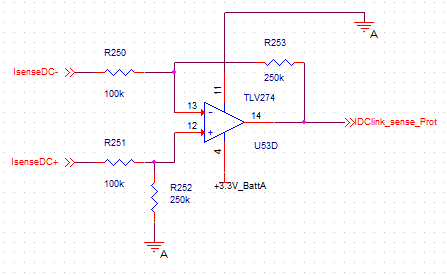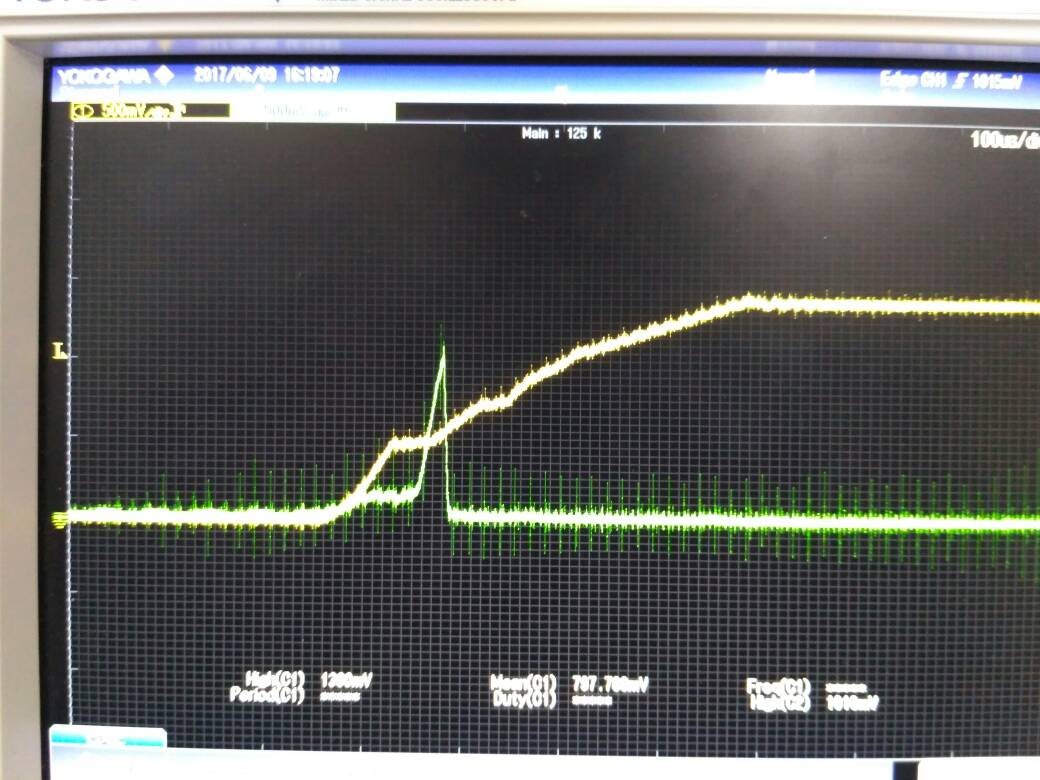Hi,
I am using the TLV274 Opamp sensing in a differential opamp configuration as shown below.
The output of this opamp is connected to a Comparator circuit which latches when Opamp output becomes more than the ref.
With the supply cap of the opamp being 0.1uF ceramic.
Problem: The opamp output as soon as the power supply switches on generates a spike.
This is how the comparator inputs (OPamp output and Reference)look like.
Yellow is the reference (The ramp in the reference is because while startup the power supply takes about 400us to reach the required supply of 5V) Scale is 0.5V/ div
Green is the opamp output(Scale is 0.5V/div)
The duration of the spike is about 50us
The peak of spike is 1.2V
Due to this spike the comparator begins to latch during the startup itself.
How do I mitigate this?
Regards,
Rajesh








